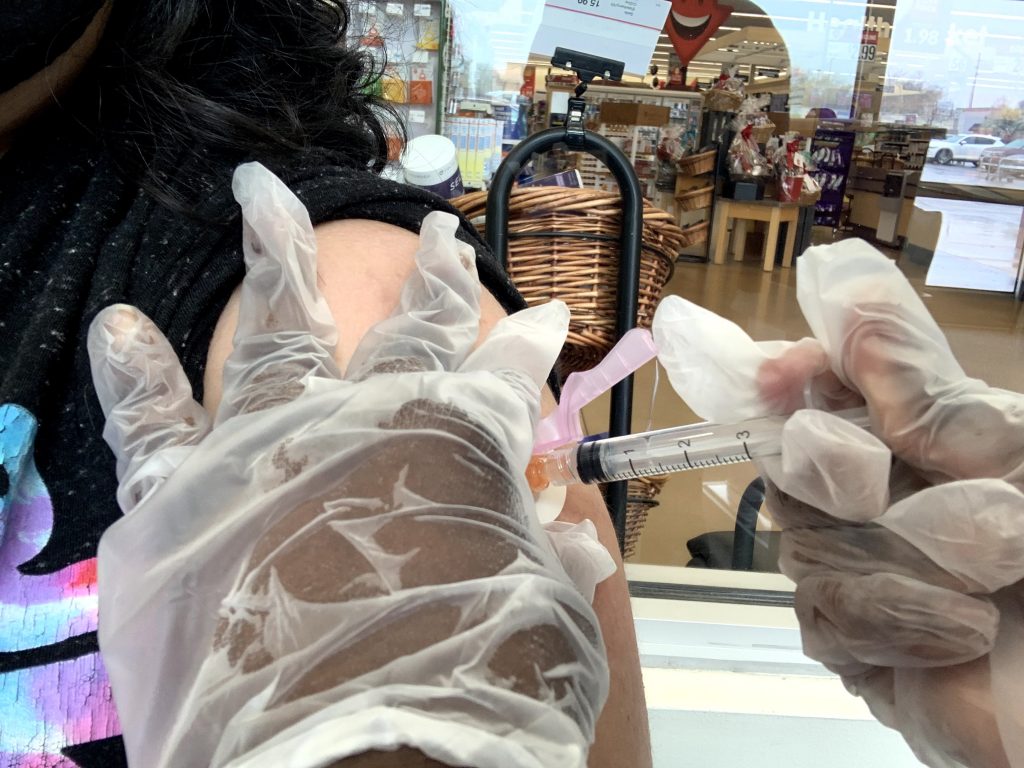
Since COVID-19 surfaced, there have been scientists and researchers around the world working to develop vaccines. The vaccines that have been approved for emergency use by the U.S. Food and Drug Administration are Pfizer, Moderna and Johnson & Johnson.
The Centers for Disease Control and Prevention had approved all three for distribution to the public in a rank that would prioritize those in certain occupations or health statutes. The CDC advised that people should get the first vaccine available rather than waiting for a certain brand.
While there may be doubts about the vaccines or misinformation spread about vaccines, Bradley’s Health Services director, Jessica Higgs, shared information about the injections.
Pfizer
The Pfizer vaccine, manufactured by Pfizer, Inc. and BioNTech, is given in two doses. The second dose should be given 21 days after the first injection.
Pfizer is currently the most effective vaccine in the U.S., with the CDC reporting a 95 percent efficiency rate when in clinical trials.
The CDC listed possible reactions to the vaccine, including pain, redness and swelling at the injection site. Body reactions include tiredness, headache, muscle pain, chills, fever and nausea.
Pfizer is an mRNA vaccine. An mRNA, as Higgs said, tells cells in the body to duplicate the COVID-19 spike proteins. The change is recognized in the body and the body will learn to attack the virus with both shots.
The CDC further defined an mRNA vaccine’s function as “[containing] material from the virus that causes COVID-19 that gives our cells instructions for how to make a harmless protein that is unique to the virus.”
Moderna
The mRNA vaccine, Moderna, is given in two doses just like the Pfizer treatment, but calls for doses to be spaced out by around 28 days. It was reported to have a 94 percent efficiency rate in its clinical trials, according to the CDC.
Moderna has similar possible side effects compared to Pfizer. The CDC recommends applying a cool and wet cloth over the injection site and using the arm with the injection to reduce pain. Drinking fluids and dressing lightly to reduce fever discomfort is also recommended.
Moderna was the vaccine Bradley received from the Peoria Public Health Department to give to students on campus from April 12 to April 13.
Johnson & Johnson
Unlike the previously mentioned vaccines, the Johnson & Johnson vaccine is a viral vector vaccine that requires only one dose.
A viral vector injection, Higgs said, is usually a virus that causes no harm to the human body that is filled with the genetic code of the COVID-19 virus. The body will again attack the virus and recognize how to handle the virus.
As the CDC described, viral vector injections “contain a modified version of a different virus than the one that causes COVID-19. Inside the shell of the modified virus, there is material from the virus that causes COVID-19.”
As of April 13, the use and distribution of the Johnson & Johnson vaccine has been paused.
In a joint statement form the FDA and CDC, six cases out of the nearly seven million already vaccinated had blood clots in their brain. The six cases were all women with ages ranging from women from ages 18 to 48.
The treatment that would usually be prescribed to these blood clots were found uneffective, Higgs said.
While it is temporarily taken out of the pool of potential vaccines, it may not be forever.
“It’s very possible that if they do approve it … there’s going to be some limitations, specifically [in] the 18-45 female age group,” Higgs said. “They put some restrictions around it, or they may not. They may say it’s so rare that it really isn’t outside the realm of normal.”
Scientists should be looking into alternative treatments or if this vaccine can continue being used, Higgs said.
“[The CDC and FDA are] not going to just go, ‘OK, it’s here and back,’” Higgs said. “There’s going to be more information about what happened and also some limitations on who should get it would be my guess.”
Allergies
While the CDC stated that people with allergies to eggs, preservatives and latex don’t have to worry about that appearing on the ingredients list, there’s still a chance for serious reactions to occur.
Higgs said that polyethylene glycol and polysorbate — two chemicals in the vaccine — are what could cause complications when receiving a dose.
“There really aren’t that many people that can’t get the vaccine,” Higgs said. “Those are both chemicals that are used to make the vaccine and they’re in a few other injectables, mostly cancer treating drugs. For the most part, it’s a fairly rare allergy.”
Doubts of the vaccine
While there may be people on the fence about getting the vaccine, Higgs said she and Health Services are listening closely to what students may worry about the injection.
“There’s some hesitation because the vaccine was developed so quickly,” Higgs said. “Some of that is because we’re a lot smarter than when we developed vaccines 60 years ago, so we actually know what we’re doing. It doesn’t take as long to develop because we have an idea how they work.”
Even with quick development, Higgs said the vaccines went through multiple trials to ensure their effectiveness. There were 4,000 participants in the trial period. Testing in multiple parts of the globe, such as England and Israel, saw high rates of success, according to Higgs.
While there are a variety of side effects, such as the ones listed before, the side effects may outweigh the symptoms of the virus, Higgs said.
Those that are generally healthy may see less of these effects with COVID-19, but there are others that could see fatality when diagnosed.
“I know, those in the college age may say, ‘Our age group never really got sick in the first place, so it doesn’t make any difference,’” Higgs said. “But … the relief to be able to hug your grandparents and not be worried about making them sick is huge.”
The COVID-19 strain that was found in England has affected the youth at the same rate, Higgs said. Getting the vaccination could prevent a rise in mortality among youth and possibly even see society go back to normal.
“The idea of getting back to normal, the idea of hanging out with friends and doing the things that college kids get to do … I think we’re all ready to go back to the things that make college college,” Higgs said.




